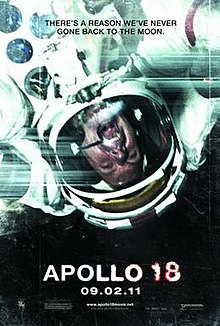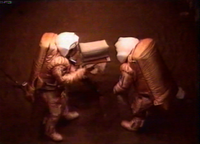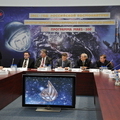T-25 minutes: Countdown commenced.
T-15 minutes: Cameras all go to launch.
T-2 minutes: Payload secured.
T-1 minute: Air horn blast.
T-0: We have lift off.
Do you guys think it is the launch of the space shuttle Discovery? If you think it is, you are mistaken.
Any guess? Well folks students have done it again in the world of space and according to ``Beyond Moon and Mars (BMM), this should inspire youngsters all over the world.
Early on Friday (IST) while Discovery was getting ready for launch at the Kennedy Space Centre, how many were aware that an another type of take off was getting ready. Not many. For reasons best known, it did not attract much media interest which is unfortunate..
This comparitely unknown mission consisted of a high altitude balloon with a payload designed and developed not by rocket scientists or space experts, but by students. It was a part of Science, Technology, Engineering and Mathematics (STEM) programme in the US. The project makes space science educationally productive, while at the same time providing a lot of fun and excitement. It is intellectually stimulating and India should encourage this type of activity.
It is a project of an organisation known as Quest For Stars and is co-sponsored by the Challenger Centre For Science Education. The flight is one in a series conducted by the Quest For Stars, a California-based non-profit educational organisation which uses off-the-shelf hardware and little ingenuity which allows students to place experiments at the edge of space at a low price.
The balloon was filled with helium and the payload was designated as Robonaut-1 (not the original Robonaut 1?). The balloon rose at a rate of 800-1000 feet per minute. Once it reached an altitude of 100,000 feet, the payload was released and came down by a parachute. On board Robonaut-1 was a high definition camera phone satellite
What was the role of this student space mission? From the edge of space at an altitude of 100,000 feet the payload photographed.Discovery as it ascended and the film and pics were downloaded. BMM has downloaded the entire sequence and it is thrilling. The payload was released and came down by a parachute.
Truly a great achievement which made the final launch of Discovery pretty memorable and significant.
Congrats.













